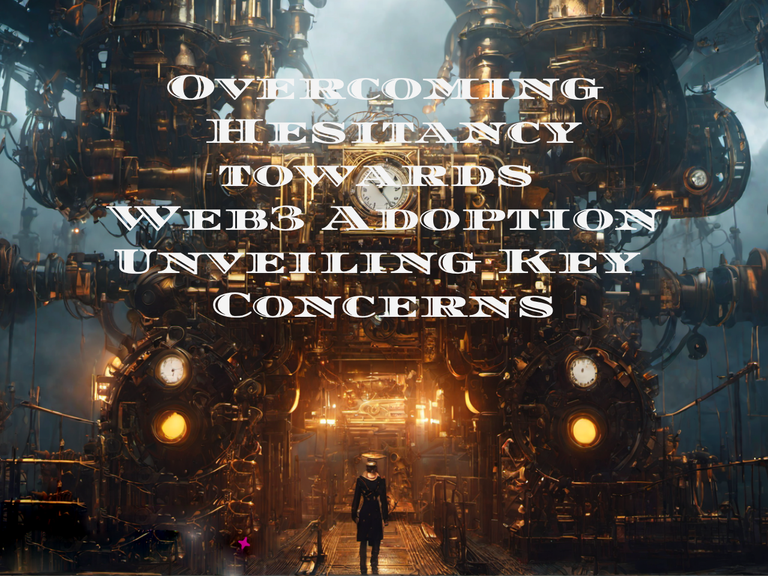
In today's rapidly evolving digital sphere, the emergence of Web3 technology stands poised to revolutionize online interactions, communication, and business practices. Despite its transformative potential, a notable reluctance persists among individuals when it comes to embracing Web3 technology like Hive or GameFi.
Now, let's take a look at the core reasons underpinning this hesitancy, addressing concerns encompassing newness, privacy and security, technical intricacies, user familiarity with centralized platforms, and uncertainties surrounding Web3's long-term sustainability.
Novelty and Understanding:
Web3 technology embodies a paradigm shift from the centralized web framework, thereby presenting a novel concept to users. The utilization of blockchain, smart contracts, and decentralized applications (dApps) can seem intimidating, often leading to a lack of understanding. The complexity associated with these terminologies, coupled with a scarcity of accessible educational resources, contributes to hesitancy. Overcoming this barrier necessitates an emphasis on simplified educational initiatives, enabling users to grasp the technology's potential and make well-informed choices.Privacy and Security Apprehensions:
Web3 is grounded in its commitment to heightened privacy and security through decentralized data management. Nevertheless, blockchain's inherent transparency, while instrumental for accountability, raises valid concerns about personal data exposure. The notion of immutable and publicly accessible personal data can be disconcerting, particularly amid prevalent instances of data breaches and privacy violations. For mass Web3 adoption, user-centric privacy mechanisms must be developed, ensuring data control while adhering to the technology's fundamental principles.Technical Complexity:
The foundation of Web3 heavily relies on intricate elements such as blockchain, cryptographic hashing, and consensus algorithms. For the average user, grappling with these technical intricacies can be overwhelming. Tasks like managing private keys, interacting with smart contracts, and navigating decentralized networks can alienate individuals lacking a background in computer science or cryptography. To mitigate this challenge, prioritizing intuitive user interfaces and providing user-friendly tools becomes pivotal for making Web3 technology accessible to a broader audience.Familiarity with Centralized Platforms:
Centralized platforms, like X or Facebook, despite their limitations, have ingrained themselves into daily routines. These platforms offer seamless experiences. The inertia of familiarity significantly contributes to individuals' reluctance to transition to Web3 alternatives. Migrating one's digital presence and activities to a novel, decentralized ecosystem requires a mindset overhaul and willingness to relearn established processes (remember Google +). Successfully convincing users entails not only showcasing Web3's advantages but also delivering intuitive tools that mirror the ease of centralized platforms.Uncertainty about Viability:
Web3's disruptive potential is matched by uncertainties surrounding its long-term viability (Steem, Weku, Whaleshares). As an emerging technology, it grapples with scalability, governance, and regulatory challenges. Apprehensions about investing time and resources into platforms that might become obsolete or encounter insurmountable obstacles can hinder adoption. Addressing these concerns mandates a collaborative approach involving developers, businesses, and policymakers to surmount challenges and cultivate a robust foundation for the Web3 ecosystem.
Mitigating hesitancy towards Web3 technology involves addressing multifaceted concerns encompassing novelty, privacy, complexity, familiarity, and viability. As the technology's potential unfolds, it is essential to recognize and counter these concerns for widespread adoption. A concerted effort encompassing the tech industry, policymakers (maybe wishful thinking), educators, and advocates is required to demystify Web3, create user-friendly tools, enhance privacy measures, and ensure sustained stability. As Web3's evolution reshapes the digital landscape, active engagement from both creators and users will be pivotal in realizing the promise of empowerment and decentralization it holds.
thanks for reading.
GGP
sources:
https://www.linkedin.com/pulse/challenges-expanding-web3-adoption-moving-beyond-web2-ronald-aai/
Posted Using LeoFinance Alpha
Thanks for sharing your content on leofinance.
By additionally sharing it on leo threads you can increase the reach and exposure.
The following post would help you in this regard
https://leofinance.io/posts/anomadsoul/curation-on-leo-finance-threads-outreach
thanks, I'll take a look!